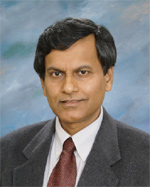 |
University of British Columbia, Vancouver, CanadaWebsite:Email: |
Clarence W. de Silva is a Professor of Mechanical Engineering and occupies the Tier 1 Canada Research Chair Professorship in Mechatronics & Industrial Automation at the University of British Columbia, Vancouver, Canada. A Professional Engineer (P.Eng.), he is also a Fellow of: ASME, IEEE, Canadian Academy of Engineering, and the Royal Society of Canada. He has received many awards including the Paynter Outstanding Investigator Award and the Takahashi Education Award of ASME Dynamic Systems and Control Division; Killam Research Prize; and Outstanding Engineering Educator Award of IEEE Canada. He has served as Editor/Associate Editor of 14 journals including ASME and IEEE transactions; and as Editor-in-Chief of International Journal of Control and Intelligent Systems. He received Ph.D. degrees from Massachusetts Institute of Technology, USA (1978) and the University of Cambridge, UK (1998), and an Honorary D.Eng. from the University of Waterloo, Canada (2008). He has authored 19 books and over 400 papers, half of which are in journals. The most recent books are: De Silva, C.W., Mechatronics—a Foundation Course, Taylor & Francis/CRC Press, Boca Raton, FL, 2010; De Silva, C.W., Modeling and Control of Engineering Systems, Taylor & Francis/CRC Press, Boca Raton, FL, 2009; De Silva, C.W., Vibration—Fundamentals and Practice, 2nd Edition, Taylor & Francis/CRC Press, Boca Raton, FL, 2007; and De Silva, C.W., SENSORS AND ACTUATORS—Control System Instrumentation, Taylor & Francis/CRC Press, Boca Raton, FL, 2007.
Design Evolution of Mechatronic Systems Through Integrated Modeling, On-Line Monitoring and Supervised Evolutionary Computing
A mechatronic system is an integrated electro-mechanical system. It will typically consist of many different types of interconnected components and elements. In view of the dynamic coupling between components, the modeling of a mechatronic system should use a multi-domain approach, where all domains (mechanical, electrical, thermal, fluid, etc.) are treated in a unified manner. Similarly, a realistic and optimal design of a mechatronic system should consider the entire system concurrently rather than using traditional design methodologies which are single-criterion and sequential. This talk will present a unified approach for modeling and analysis of mechatronic systems. First the need for a unified approach will be justified in view of the presence of electro-mechanical analogies. Next, linear graphs will be promoted as a useful tool for unified modeling of dynamic systems, where the existing analogies can be exploited. Finally, Thevenin’s theorem will be extended to mechanical systems. Specifically, equivalent circuits of Thevenin and Norton are integrated with linear graphs, in the frequency domain, to facilitate analytical modeling. The choice of a particular equivalent circuit is shown to depend on the problem objective. Next the talk will explore a multi-criteria and concurrent approach to optimal mechatronic design, and will justify it over the sequential approach. A design formulation and criteria based on a mechatronic design quotient (MDQ) will be introduced for this purpose. Human experience on multi-domain systems and interactions between criteria should be taken into account by applying techniques of soft computing for the aggregation of criteria. Evolutionary computing may be used in the design optimization. Using these tools of multi-domain modeling, mechatronic design optimization, and supervised evolutionary computing supported through on-line monitoring and design expert system, it is possible to “evolve” design improvements for an existing mechatronic system. The talk will present this integrated approach for evolutionary design. Worked examples and demonstrations will be provided throughout to illustrate the approaches and their application.